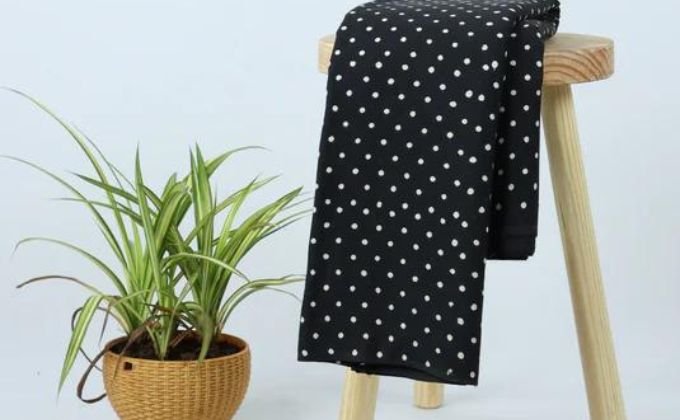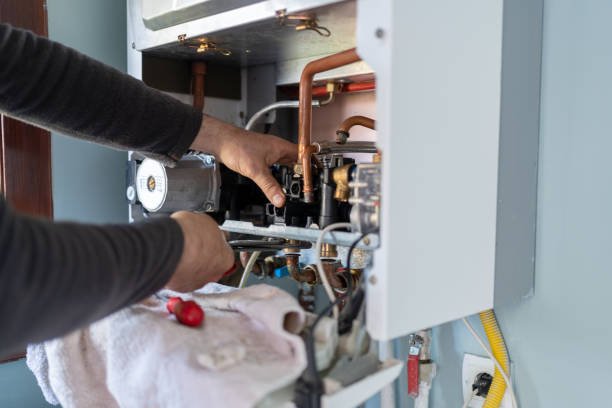Introduction
Waterproofing window openings is a critical step in ensuring the longevity and performance of your windows. As more homeowners and builders look for energy-efficient window installation methods, questions often arise: Can I use fiberboard to waterproof a window opening? How can one effectively insulate the outside of a window while maintaining a waterproof seal? In this guide, we’ll explore fiberboard’s role in waterproofing, the installation of windows with exterior insulation, and the benefits of using foam sheathing for window installations.
The Benefits of Carpet Cleaning for a Healthier Home Atmosphere
Waterproofing techniques have advanced significantly, and choosing suitable materials can prevent leaks, mould growth, and other moisture-related issues. Creating a robust and watertight seal is essential whether you’re working with fiberboard, foam sheathing, or other materials.
In this comprehensive guide, we will address these fundamental questions and more:
- Is wood fibre waterproof?
- How do you waterproof wooden window frames?
- How can I make my windows waterproof?
By the end, you’ll have a clearer understanding of these methods and materials, giving you the confidence to choose the best waterproofing strategy for your windows.
What is Fiberboard, and Can It Waterproof a Window Opening?
Fiberboard, also known as wood fiberboard, is a popular construction material due to its affordability, availability, and ease of use. While it offers excellent insulation properties, fiberboard is not inherently waterproof. One of the common concerns with fiberboard is its susceptibility to moisture damage. So, if you plan to use it around window openings, you must incorporate proper waterproofing methods to protect it.
Using Fiberboard for Waterproofing
Fiberboard can be part of a waterproofing system, but it lacks the necessary properties to act as a reliable barrier against water infiltration. To use fiberboard effectively, consider applying the following:
- Waterproof Membrane: Use a high-quality waterproofing membrane over the fiberboard. This membrane acts as a barrier, keeping moisture away from the window opening while allowing the fiberboard to provide insulation.
- Sealants: Use specialized sealants around the edges of the fiberboard, especially where it meets the window, to ensure that no water can penetrate through the gaps. Look for products that are compatible with fiberboard and designed for window installations.
- Siding or Cladding: Covering the fiberboard with an exterior cladding material, such as vinyl siding or fibre-cement board, provides additional protection from the elements. The cladding should overlap the window edges to ensure water flows away from the window, not toward it.
While fiberboard can add thermal efficiency to your project, it should always be considered the sole waterproofing material. Combining it with other waterproofing methods and materials is essential.
Installing Windows with Exterior Insulation
With the rising demand for energy-efficient homes, more homeowners are turning to exterior insulation to improve their thermal performance. Installing windows with exterior insulation can be tricky, but with the proper process, you can achieve a tight seal that prevents water and air infiltration.
Benefits of Exterior Insulation
- Energy Efficiency: Exterior insulation helps to create a continuous thermal envelope, reducing heat loss and ensuring that your home stays warmer in the winter and cooler in the summer.
- Moisture Management: By insulating the outside of the building, you reduce the risk of condensation forming inside the walls, which can lead to mould and rot.
- Durability: When done correctly, exterior insulation protects the building structure, improving its longevity and performance.
Steps to Install Windows with Exterior Insulation
- Frame Preparation: Before installing the window, prepare the rough opening. Ensure the opening is square and level, and apply a waterproof flashing membrane around the perimeter. This prevents water from entering behind the window frame.
- Add Insulation Board: Attach a rigid foam insulation board to the exterior walls around the window opening. The foam board should be cut to fit snugly around the window, leaving space for the flashing and sealant.
- Install the Window: Set the window in place according to the manufacturer’s instructions. Ensure the window is correctly seated in the opening, with no gaps between the frame and the foam insulation.
- Seal and Flash: Apply flashing tape over the window flange, ensuring it overlaps the foam insulation. This creates a continuous barrier, preventing water from seeping into the wall cavity. Seal the edges of the flashing with caulk or sealant to prevent air and water infiltration.
- Install Cladding: Once the window is in place and sealed, install the exterior cladding, such as siding or brick veneer, over the insulation. The cladding should overlap the flashing to direct water away from the window opening.
Installing Windows with Foam Sheathing
Foam sheathing is another popular option for improving your home’s thermal performance. It provides a continuous insulation layer, preventing thermal bridging (where heat escapes through the studs and framing). Installing windows with foam sheathing follows a process similar to exterior insulation, but additional considerations exist.
Why Use Foam Sheathing?
- Energy Efficiency: Foam sheathing provides excellent insulation, reducing heat transfer and improving your home’s overall energy performance.
- Moisture Resistance: Unlike fiberboard, foam sheathing is resistant to moisture. However, it’s essential to install it properly to avoid trapping water behind the foam.
- Cost-Effective: Foam sheathing is relatively inexpensive and can significantly reduce heating and cooling costs in the long term.
Steps to Install Windows with Foam Sheathing
- Prepare the Opening: Like exterior insulation, prepare the rough window opening. Use a waterproof flashing membrane to seal the opening.
- Apply Foam Sheathing: Install rigid foam sheathing around the window opening. The foam should be cut to fit tightly against the window frame and sealed with foam-compatible tape or sealant.
- Install the Window: Once the foam sheathing is in place, install the window according to the manufacturer’s instructions. Ensure the window sits tightly against the foam, with no gaps between the frame and the sheathing.
- Seal the Edges: Use flashing tape to cover the window flanges and the edges of the foam sheathing. This will prevent water from getting behind the foam and into the wall cavity.
- Cladding Installation: After sealing the window, install the exterior cladding, ensuring it overlaps the foam sheathing and flashing. This helps direct water away from the window and provides a finished appearance.
How Can I Make My Windows Waterproof?
Waterproofing windows is essential to prevent leaks, drafts, and water damage. Several methods can be used to ensure your windows are fully waterproof.
Critical Steps to Waterproofing Windows
- Use Waterproof Flashing: Flashing is a waterproof membrane that directs water away from the window opening. Apply flashing tape around the window’s perimeter to create a watertight seal.
- Seal Gaps with Caulk: Use a high-quality exterior caulk around the edges of the window frame to seal any gaps between the frame and the siding. This prevents water from seeping behind the window.
- Install a Drip Cap: A drip cap is a metal or vinyl strip installed above the window. It directs water away from the window, preventing it from running down the wall and into the window opening.
- Apply Exterior Sealant: After installing the window, use a flexible, weatherproof sealant to fill any remaining gaps around the window frame. Make sure to choose a product designed for exterior use.
Is Wood Fiber Waterproof?
Wood fibre is not naturally waterproof. When exposed to water, wood fiberboard can absorb moisture, leading to swelling, warping, and eventual degradation. However, you can treat wood fibre products to make them more moisture-resistant.
How to Waterproof Wood Fiber
- Apply Waterproofing Sealant: Use a waterproofing sealant specifically designed for wood products. This will create a protective barrier, reducing the wood’s ability to absorb water.
- Use a Vapor Barrier: When installing wood fibre products near windows, use a vapour barrier to prevent moisture from penetrating the material.
- Combine with Other Materials: As mentioned earlier, combining wood fibre with waterproof membranes or foam sheathing can improve its moisture resistance and longevity.
How to Insulate the Outside of a Window
Insulating the outside of a window helps improve your home’s energy efficiency and reduces the risk of drafts. There are several methods for insulating the exterior of your windows.
Methods for Insulating the Exterior of a Window
- Rigid Foam Insulation: A rigid foam board can be installed around the window opening, providing a continuous insulation layer. This helps to reduce heat transfer and prevents drafts from entering the home.
- Spray Foam Insulation: Spray foam is another option for insulating around window frames. It expands to fill gaps and creates a tight seal, improving the window’s overall energy performance.
- Exterior Window Shades or Awnings: Installing exterior shades or awnings can help reduce heat gain in the summer, keeping your home cooler and reducing the need for air conditioning.
Final Thoughts
Ensuring your windows are properly insulated and waterproofed is critical for maintaining energy efficiency and protecting your home from water damage. While materials like fiberboard provide excellent insulation, they are not waterproof and should be used with other materials like waterproof membranes and foam sheathing. Following the proper installation techniques ensures that your windows are energy-efficient and protected from the elements.
Questions & Answers
Q: Can I use fiberboard alone to waterproof a window opening?
A: No, fiberboard is not inherently waterproof. It should be used with a waterproofing membrane and sealants to ensure a watertight seal.
Q: What is the best way to waterproof wooden window frames?
A: Use a combination of flashing tape, exterior caulk, and sealants designed for exterior use. A drip cap above the window can also help direct water away from the frame.
Q: Is foam sheathing better than fiberboard for window installations?
A: Foam sheathing is more moisture-resistant and provides better insulation, making it a preferred choice for many window installations over fiberboard.
Q: How can I insulate the outside of my windows?
A: You can insulate the outside of your windows with rigid foam insulation, spray foam, or exterior window shades and awnings to reduce heat gain and improve energy efficiency.



